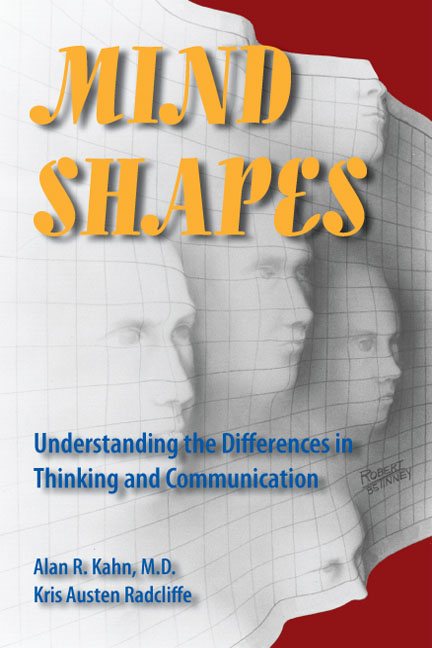"An important contribution to the field of psychology; very clear and thorough... This is an amazing book with far-reaching implications."
—Herbert S. Demmin, psychologist and author, Ghosts of Consciousness
“Kahn’s approach transforms the way we view others, and is especially helpful in improving communication in organizations... My graduate students say it has profoundly influenced the way they approach their professions.”
—David A. Shupe, Ph.D., adjunct member of the graduate faculty, University of Minnesota
"…a fascinating and thought provoking exploration of cognition. By linking brain function and social systems, Kahn’s book offers valuable insights into how we function and what we do. This dynamic framework moves beyond traditional descriptions to predict how profiles react."
—Dr. Mary Lippitt is the author of the award winning book, The Leadership Spectrum: 6 Business Priorities That Get Results, and is President of Enterprise Management, Ltd.
In our everyday encounters, we are continuously challenged by people who think and respond in ways different from ourselves. Each one of us pays attention to different aspects of life, interprets experiences differently, understands certain issues better than others, communicates with differing styles, and uses different criteria for judging and believing others. Parents of a family with several children are usually amazed by the diverse ways in which the children develop. Managers are confounded by the unexpected misunderstandings among themselves and those they manage. Educators find it difficult to account for the broad spectrum of students' responses to a single course of study. And in relationships, one is often perplexed at the ways in which common, everyday words are sometimes interpreted. Those of us who study the ways in which people interact, continue to marvel at the differences people bring to thinking and communicating.
For the past 20 years, Dr. Kahn has led a team of scientists in in-depth studies of the different brain processes leading to the different types of information processing in people. This research has developed tools which can measure how people reveal the structure of their thought processes in the flow of their communications. This has enabled the team to develop a model that organizes cognitive structures according to a new paradigm, one that explicitly shows the connections between cognition, input, and output. This paradigm identifies sixteen different ways in which people process information, and describes the underlying brain mechanisms which are responsible. Further, Mind Shapes presents how these differences developed through the stages of human evolution and the way they are expressed in the steps of modern child development.
Theory and practice come together as Mind Shapes links physiology of information processing to behavior, and shows how different people communicate, learn, and make decisions. This model has been successfully applied to education, management, consumer communications, and psychological counseling: dimensions of life where understanding human behavior and motivation are critical to success. Mind Shapes provides its readers with useful tools which were developed as a result of this experience.





